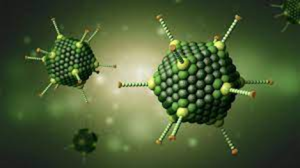Please click the frequently asked questions below for further information and IPC precautions required:
What is Adenovirus?
Adenoviruses can cause mild to severe illness, though serious illness is less common. People with weakened immune systems, or existing respiratory or cardiac disease, are at higher risk of developing severe illness from an adenovirus infection.
How does it spread?
Adenoviruses are usually spread from an infected person to others through
- close personal contact, such as touching or shaking hands
- droplets by coughing and sneezing
- touching an object or surface with adenoviruses on it, then touching your mouth, nose, or eyes before washing your hands
- Some adenoviruses can spread through an infected person’s stool, for example, during nappy changing. Adenovirus can also spread through the water, such as swimming pools, but this is less common.
What are the symptoms of Adenovirus?
Adenoviruses can cause a wide range of illnesses such as
- common cold or flu-like symptoms
- fever
- sore throat
- acute bronchitis (inflammation of the airways of the lungs, sometimes called a “chest cold”)
- pneumonia (infection of the lungs)
- pink eye (conjunctivitis)
- acute gastroenteritis (inflammation of the stomach or intestines causing diarrhoea, vomiting, nausea and stomach pain)
Less common symptoms of adenovirus infection include
- bladder inflammation or infection
- neurologic disease (conditions that affect the brain and spinal cord)
Why is this important?
If NIAS staff are aware that the patient has a suspected or confirmed case this should be communicated to the Control Room (Emergency or Non-emergency as appropriate) and the staff in the receiving unit when transferring the patient to ensure effective patient care and management.
IPC Precautions
- Droplet precautions should be used
- Hand Hygiene should be completed as per the 5 moments in line with usual practice.
- Eye protection should be risk assessed for any concern regarding a splash risk.
- A Fluid Resistant Surgical Mask should be worn.
- Gloves and Aprons should be worn.
- The patient should be transported via ambulance with no other patients present and asked to wear a FRSM if tolerated and does not interfere with their treatment.
- Laundry should be treated as contaminated, placed into an alginate bag and placed into a red laundry bag.
What cleaning is required?
All equipment and the ambulance should have a in-between patient clean, paying particular attention to touch points.
Do staff need prophylaxis or follow up?
If appropriate PPE is worn there is no follow up required for staff.
If staff have had a breach in PPE they should remain vigilant for any signs or symptoms. There is no prophylaxis required.
